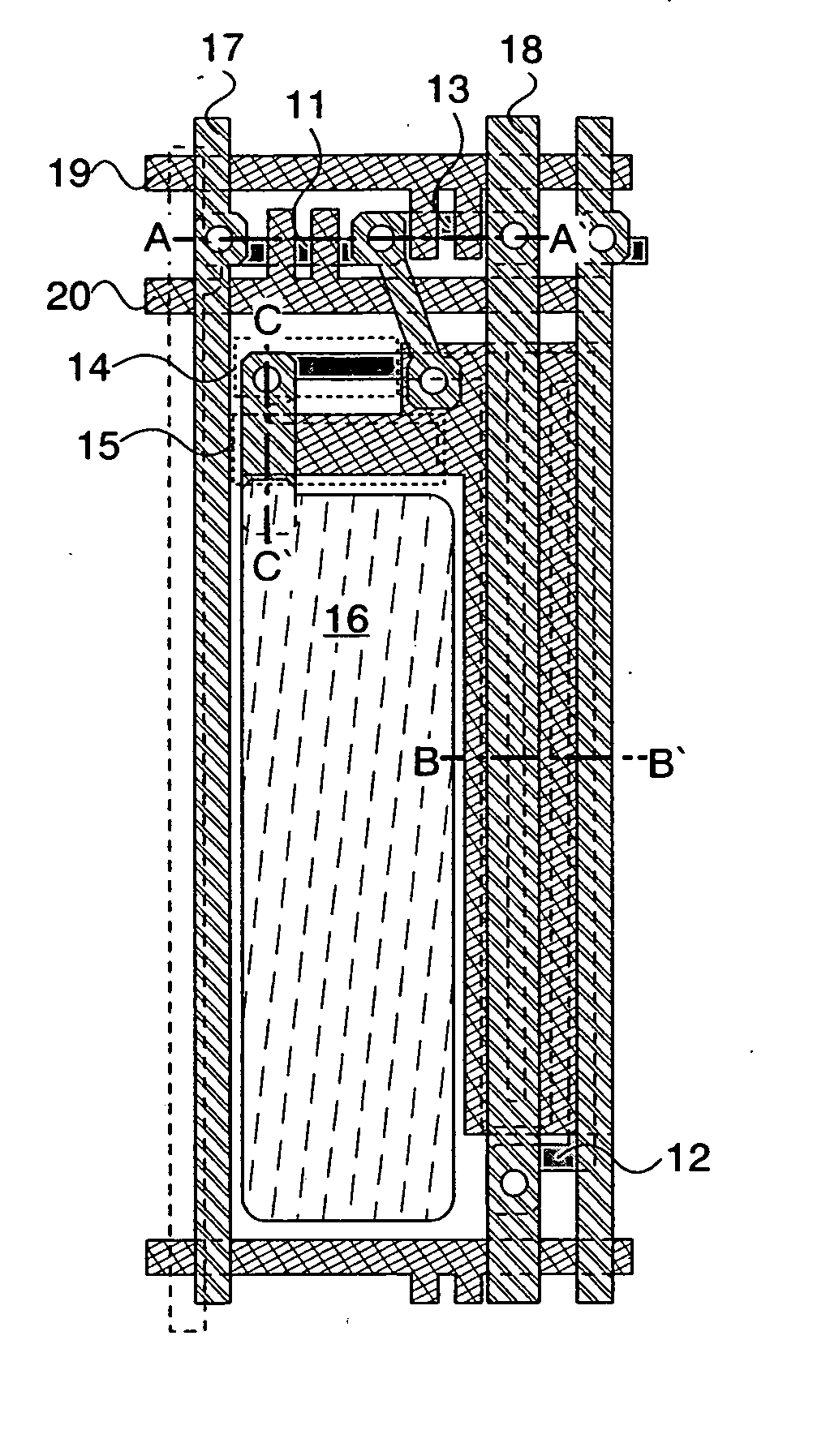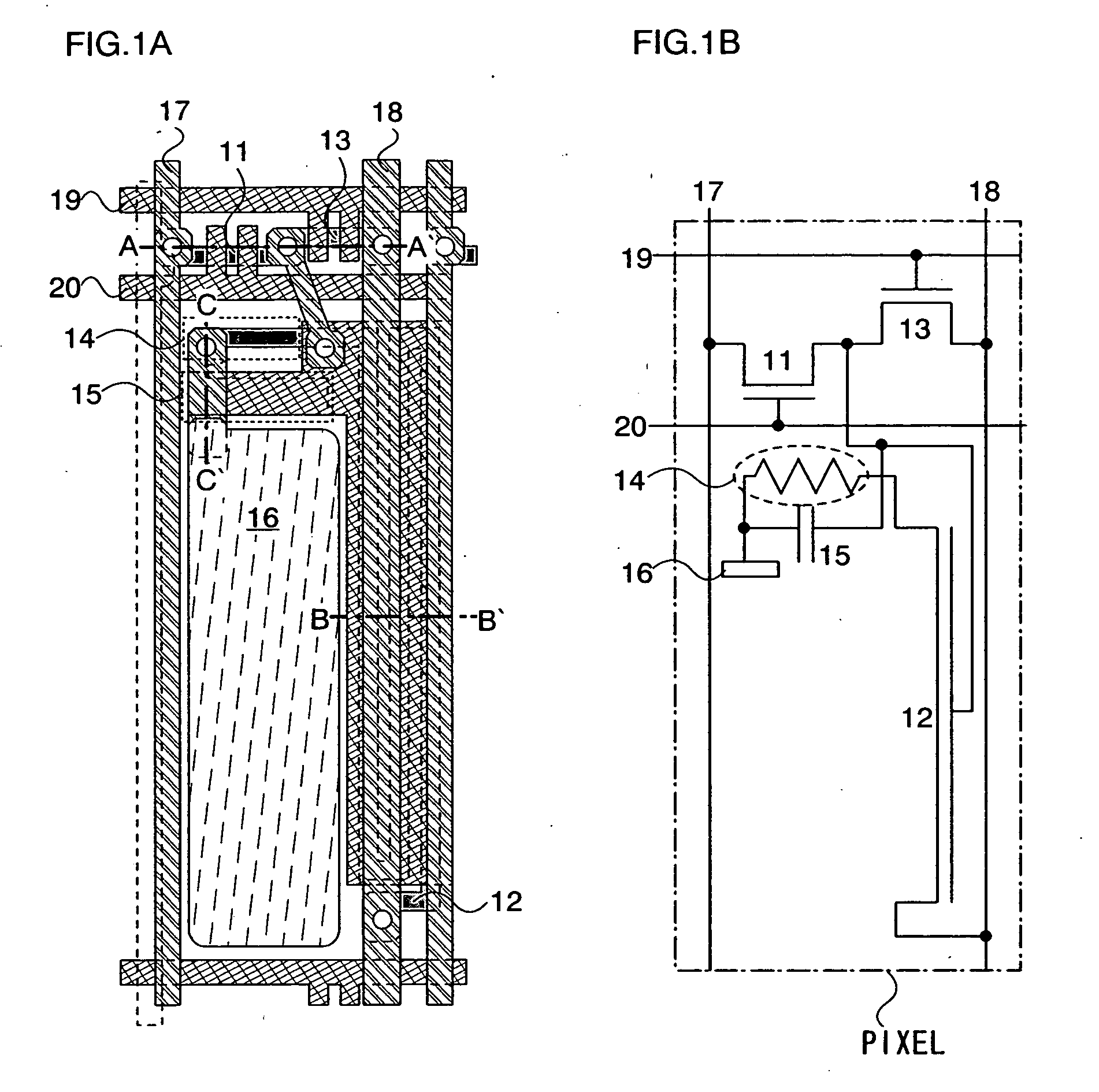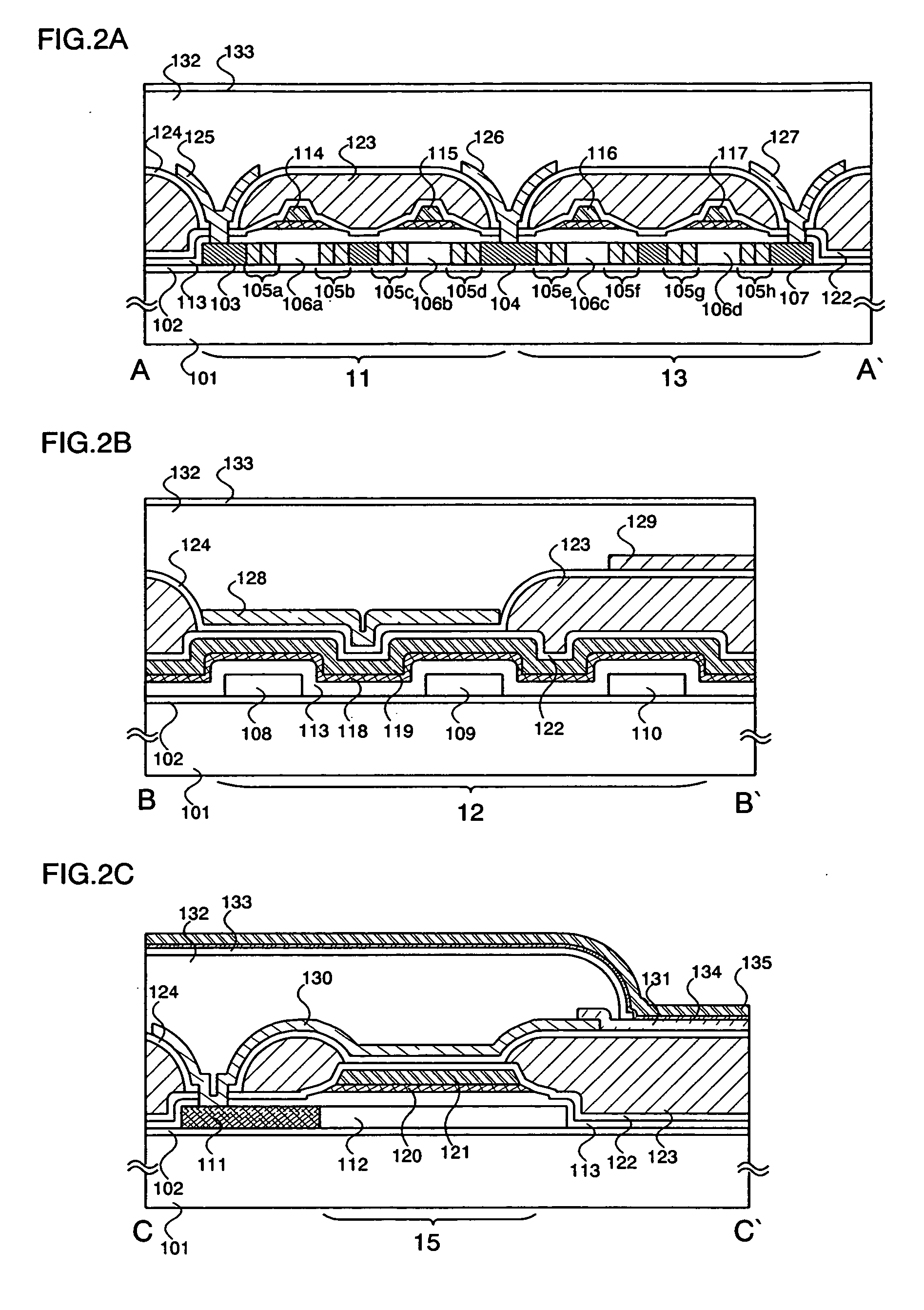Semiconductor device
a semiconductor and device technology, applied in semiconductor devices, instruments, electrical equipment, etc., can solve the problems of minute semiconductor elements manufactured on a substrate degrading or being destroyed, degradation or destruction of semiconductor elements connected to pixel electrodes, etc., to relieve sudden changes, and prevent electrostatic discharge damage
- Summary
- Abstract
- Description
- Claims
- Application Information
AI Technical Summary
Benefits of technology
Problems solved by technology
Method used
Image
Examples
embodiment mode 1
[0041] An embodiment mode of the present invention is explained using FIGS. 1A to 3. FIGS. 1A and 1B show a state up through the manufacture of a pixel electrode. FIG. 1A is a schematic diagram of a top view (masking diagram) of a pixel of a semiconductor device, and FIG. 1B is a circuit diagram that schematically expresses a circuit structure thereof. FIGS. 2A to 2C are cross sectional diagrams of the pixels of FIG. 1A. FIG. 3 is a photograph of a panel having an actually manufactured pixel, magnified to approximately 635 times with an optical microscope.
[0042] Each of the pixels shown in FIGS. 1A and 1B are disposed in a region surrounded by a signal line 17 and an electric power source line 18 arranged in a column direction, and a scanning line 20 and a reset line 19 arranged in a row direction. Further, each of the pixels has a switching transistor 11 (hereinafter written as the transistor 11), a driving transistor 12 (hereinafter written as the transistor 12), an erasing trans...
embodiment mode 2
[0065] An embodiment mode of the present invention is explained using FIGS. 4A to 9. FIGS. 4A to 6B show a state up through the manufacture of a pixel electrode. FIG. 4A to 6A are schematic diagrams of a top view (masking diagram) of a pixel of a semiconductor device, and FIG. 4B to 6B are circuit diagrams that schematically express a typical circuit structure thereof. FIGS. 7A to 7D are cross sectional diagrams of the pixels of FIGS. 4A to 6A. FIGS. 8 and 9 are photographs of a panel having an actually manufactured pixel, magnified to approximately 695 times with an optical microscope.
[0066] Each of the pixels shown in FIGS. 4A to 6B is disposed in a region surrounded by the signal line 17 and the electric power source line 18, which are arranged in a column direction, and the scanning line 20 and the reset line 19, which are arranged in a row direction. Further, each of the pixels has the transistors 11 to 13, and the pixel electrode 16. Each of the pixels shown in FIGS. 4A and 4...
embodiment mode 3
[0086] Circuit diagrams in a state up through the manufacture of the pixel electrode are shown in Embodiment Modes 1 and 2, discussed above, but a circuit diagram of a state up through the manufacture of a light-emitting element is explained in this embodiment mode by using FIGS. 10A to 10D.
[0087] Pixels shown in FIGS. 10A to 10D correspond to the pixels shown in FIGS. 1B, 4B, 5B, and 6B, respectively. A protecting means, which corresponds to one or a plurality of elements selected from the resistor element 14, the capacitor element 15, and the rectifying element 22, is formed between the transistor 12 and a pixel electrode of a light-emitting layer 25 in all of the pixels. Further, a counter electrode of the light-emitting element 25 is connected to the electric power source line 24.
[0088] In addition, although the transistors 11 and 13 are n-channel and the transistor 12 is p-channel in each of the pixels shown in FIGS. 10A to 10D, the present invention is not limited in particu...
PUM
 Login to View More
Login to View More Abstract
Description
Claims
Application Information
 Login to View More
Login to View More - R&D
- Intellectual Property
- Life Sciences
- Materials
- Tech Scout
- Unparalleled Data Quality
- Higher Quality Content
- 60% Fewer Hallucinations
Browse by: Latest US Patents, China's latest patents, Technical Efficacy Thesaurus, Application Domain, Technology Topic, Popular Technical Reports.
© 2025 PatSnap. All rights reserved.Legal|Privacy policy|Modern Slavery Act Transparency Statement|Sitemap|About US| Contact US: help@patsnap.com



